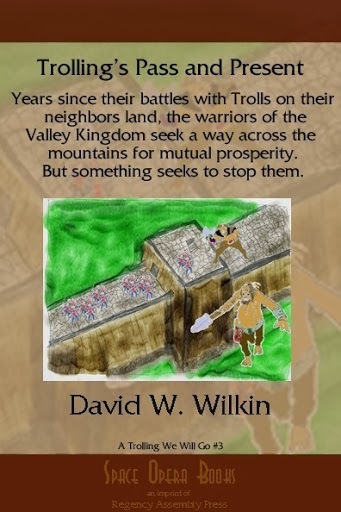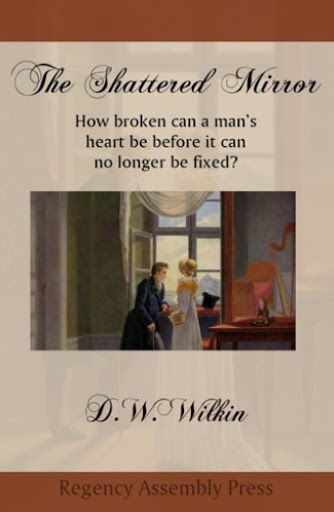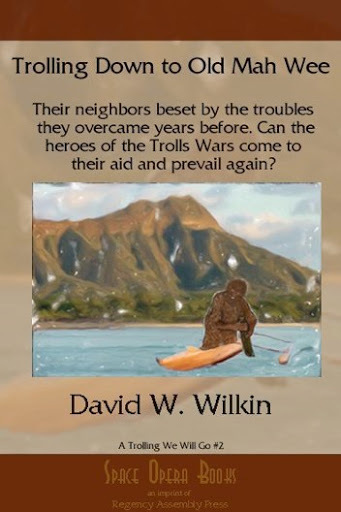D.W. Wilkin's Blog, page 42
July 7, 2016
Regency Personalities Series-James Sherman
Regency Personalities Series
In my attempts to provide us with the details of the Regency, today I continue with one of the many period notables.
James Sherman
21 February 1796 – 15 February 1862
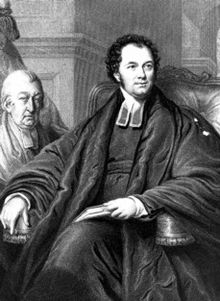
James Sherman
James Sherman was the son of an officer in the East India Company, he was born in Banner Street, St. Luke’s, London, on 21 February 1796. After some education from dissenting ministers, he spent three years and a half as apprentice to an ivory-turner.
Sherman entered, on 6 November 1815, the Countess of Huntingdon’s Cheshunt College. He preached his first sermon in London in Hare Court chapel, Aldersgate Street, in 1817, and on 26 Nov. 1818 he was ordained to the ministry in Sion Chapel, Whitechapel. After preaching for some time in the Countess of Huntingdon’s chapel at Bath, Somerset, he was appointed permanent minister of her chapel at Bristol, where he made the acquaintance of Hannah More and of Mary Anne Schimmelpenninck. In April 1821 he moved to Castle Street chapel, Reading, Berkshire.
James Sherman was a prominent supporter of missionary work, principally the work of the non-denominational London Missionary Society. The missionary Rev. Samuel Oughton was sent to Jamaica from Sherman’s Surrey Chapel in 1836; an arrangement on behalf of the Baptist Missionary Society, a body that worked closely with the LMS, and practiced congregational principles of church governance.
Shortly before 1840, James Sherman became a founding trustee and director of the Congregationalist’s new non-denominational enterprise – Abney Park Cemetery.
All parts of the grounds were to be open for burial to everyone, regardless of denomination, without invidious dividing lines. It became the first garden cemetery in Europe to be wholly non-denominational in this respect whilst also having just one chapel, to be shared by everyone.
James Sherman’s earliest works were devotional, but in the 1840s he developed his writing skills as a biographer. In 1848 James Sherman wrote The Pastor’s Wife, a biography of Mrs Sherman in memory of her death. Recently he had also completed a biography of the Quaker philanthropist William Allen.
Of political significance in the 1850s was a semi-fictional book written on one side of the Atlantic, to which James Sherman contributed an introduction written on the other. This was Uncle Tom’s Cabin, by the American Congregationalist Harriet Beecher Stowe, with Sherman’s introduction from London. The number of copies of the work sold was unprecedented in American literature. It was written in serial form for The National Era, an abolitionist newspaper, in 1851. When it appeared as a two volume work by March 1852, with Sherman’s introduction, it quickly became a historic work. For the book’s promotional tour in London in the early summer of 1852, Stowe, her husband, and her brother Charles Beecher, stayed at Sherman’s house. At the same time he invited the African-American escaped slave and Congregational minister Samuel Ringgold Ward, and assisted his stay in Britain for nearly a year, helping him raise funds for the Canadian Anti-slavery Society at a time when many escaped slaves from the USA were trying to reach freedom in British Canada.
Sherman became minister at Blackheath Congregational Church 1854-62 and was succeeded at Surrey Chapel by Christopher Newman Hall. Hall continued Sherman’s abolitionist cause by visiting America during the Civil War, and publishing books and making speeches to enlist British support on the side of the north: England should side with the North, he wrote, particularly because emancipation of the slaves is just.
James Sherman died at his home in The Paragon, Blackheath, and was buried in a plain stone chest tomb at Abney Park Cemetery in Stoke Newington, London – the Congregationalist’s novel non-denominational garden cemetery of which he was a founder director and trustee. His memorial stone is visible amongst the undergrowth from the westmost path. A modern marker stone has been placed in front of the original in order to distinguish the grave as seen from the path.
Sherman, James (1851) Memoir of William Allen, London: Charles Gilpin
Beecher-Stowe, Harriet (1852) Uncle Tom’s Cabin; or life among the lowly…with introductory remarks by J. Sherman, London:H.G.Bohn
Beecher-Stowe, Harriet (1875 edn.) Uncle Tom’s Cabin; or life among the lowly…with introductory remarks by J. Sherman, London:George Bell & Sons
Dearing, John (1993), The Church that would not die, Baron Birch
Sherman, James (1829 edn.) A Guide to Acquaintance with God, Boston: James Loring
Sherman, James (1850 edn.) The Pastor’s Wife: a memoir of Mrs Martha Sherman, New York: American Tract Society


An Unofficial Guide to how to win the Scenarios of Wild the 2nd Expansion for Rollercoaster Tycoon 3
An Unofficial Guide to how to win the Scenarios of Wild
I have been a fan of this series of computer games since early in its release of the very first game. That game was done by one programmer, Chris Sawyer, and it was the first I recall of an internet hit. Websites were put up in dedication to this game where people showed off their creations, based on real amusement parks. These sites were funded by individuals, an expense that was not necessarily as cheap then as it is now. Nor as easy to program then as it might be to build a web page now.
Prima Books released game guides for each iteration of the game, Rollercoaster Tycoon 1, Rollercoaster Tycoon 2 and Rollercoaster Tycoon 3 (RCT3) but not for the expansion sets. And unlike the first two works, the third guide was riddle with incorrect solutions. As I played the game that frustrated me. And I took to the forums that Atari, the game publisher hosted to see if I could find a way to solve those scenarios that the Prima Guide had written up in error. Not finding any good advice, I created my own for the scenarios that the “Official” Guide had gotten wrong.
Solutions that if you followed my advice you would win the scenario and move on. But if you followed the “Official” version you would fail and not be able to complete the game. My style and format being different than the folks at Prima, I continued for all the Scenarios that they had gotten right as well, though my solutions cut to the chase and got you to the winner’s circle more quickly, more directly.
My contributions to the “Official” Forum, got me a place as a playtester for both expansions to the game, Soaked and Wild. And for each of these games, I wrote the guides during the play testing phase so all the play testers could solve the scenarios, and then once again after the official release to make changes in the formula in case our aiding to perfect the game had changed matters. For this, Atari and Frontier (the actual programmers of the game) placed me within the game itself.
And for the longest time, these have been free at the “Official” Forums, as well as my own website dedicated to the game. But a short time ago, I noticed that Atari, after one of its bankruptcies had deleted their forums. So now I am releasing the Guide for one and all. I have added new material and it is near 100 pages, just for the first of the three games. It is available for the Kindle at present for $2.99.
(Click on the picture to purchase)
Not only are all 12 Scenarios covered, but there are sections covering every Cheat Code, Custom Scenery, the famous Small Park Competition, the Advanced Fireworks Editor, the Flying Camera Route Editor which are all the techniques every amusement park designer needs to make a fantastic park in Rollercoaster Tycoon 3.
Scenarios for WILD!
1) Scrub Gardens
2) Ostrich Farms Plains
3) Egyptian Sand Dance
4) A Rollercoaster Odyssey
5) Zoo Rescue
6) Mine Mountain
7) Insect World
8) Rocky Coasters
9) Lost Land of the Dinosaurs
10) Tiger Forest
11) Raiders of the Lost Coaster
12) Saxon Farms


July 6, 2016
Regency Personalities Series-Benjamin West
Regency Personalities Series
In my attempts to provide us with the details of the Regency, today I continue with one of the many period notables.
Benjamin West
October 10, 1738 – March 11, 1820
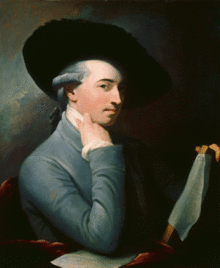
Benjamin West
Benjamin West was an Anglo-American painter of historical scenes around and after the time of the American War of Independence and the Seven Years’ War. He was the second president of the Royal Academy in London, serving from 1792 to 1805 and 1806 to 1820. He was offered a knighthood by the British Crown, but declined it, believing that he should instead be made a peer. He said that “Art is the representation of human beauty, ideally perfect in design, graceful and noble in attitude.”
West was born in Springfield, Pennsylvania, in a house that is now in the borough of Swarthmore on the campus of Swarthmore College, as the tenth child of an innkeeper and his wife. The family later moved to Newtown Square, Pennsylvania, where his father was the proprietor of the Square Tavern, still standing in that town. West told the novelist John Galt, with whom, late in his life, he collaborated on a memoir, The Life and Studies of Benjamin West (1816, 1820) that, when he was a child, Native Americans showed him how to make paint by mixing some clay from the river bank with bear grease in a pot. Benjamin West was an autodidact; while excelling at the arts, “he had little [formal] education and, even when president of the Royal Academy, could scarcely spell”.
From 1746 to 1759, West worked in Pennsylvania, mostly painting portraits. While West was in Lancaster in 1756, his patron, a gunsmith named William Henry, encouraged him to paint a Death of Socrates based on an engraving in Charles Rollin’s Ancient History. His resulting composition, which significantly differs from the source, has been called “the most ambitious and interesting painting produced in colonial America”. Dr William Smith, then the provost of the College of Philadelphia, saw the painting in Henry’s house and decided to become West’s patron, offering him education and, more importantly, connections with wealthy and politically connected Pennsylvanians. During this time West met John Wollaston, a famous painter who had immigrated from London. West learned Wollaston’s techniques for painting the shimmer of silk and satin, and also adopted some of “his mannerisms, the most prominent of which was to give all his subjects large almond-shaped eyes, which clients thought very chic”. West was a close friend of Benjamin Franklin, whose portrait he painted. Franklin was the godfather of West’s second son, Benjamin.
Sponsored by Smith and William Allen, then reputed to be the wealthiest man in Philadelphia, West traveled to Italy in 1760. In common with many artists architects and lovers of the fine arts at that time he conducted a Grand Tour. West expanded his repertoire by copying works of Italian painters such as Titian and Raphael direct from the originals. In Rome he met a number of international neo-classical artists including German-born Anton Rafael Mengs, Scottish Gavin Hamilton, and Austrian Angelica Kauffman.
In August 1763, West arrived in England, on what he initially intended as a visit on his way back to America. In fact, he never returned to America. He stayed for a month at Bath with William Allen, who was also in the country, and visited his half-brother Thomas West at Reading at the urging of his father. In London he was introduced to Richard Wilson and his student Joshua Reynolds. He moved into a house in Bedford Street, Covent Garden. The first picture he painted in England Angelica and Medora, along with a portrait of General Monckton, and his Cymon and Iphigenia, painted in Rome, were shown at the exhibition in Spring Gardens in 1764.
In 1765 he married Elizabeth Shewell, an American to whom he became engaged in Philadelphia, at St Martin-in-the-Fields.
Dr Markham, then Headmaster of Westminster School, introduced West to Samuel Johnson, Edmund Burke, Thomas Newton, Bishop of Bristol, James Johnson, Bishop of Worcester, and Robert Hay Drummond, Archbishop of York. All three prelates commissioned work from him. In 1766 West proposed a scheme to decorate St Paul’s Cathedral with paintings. It was rejected by the Bishop of London, but his idea of painting an altarpiece for St Stephen Walbrook was accepted. At around this time he also received acclaim for his classical subjects, such as Orestes and Pylades and The Continence of Scipio.
Benjamin West was known in England as the “American Raphael”. His Raphaelesque painting of Archangel Michael Binding the Devil is in the collection of Trinity College, Cambridge.
Drummond tried to raise subscriptions to fund an annuity for West, so that he could give up portraiture and devote himself to entirely to more ambitious compositions. Having failed in this, he tried—with greater success—to convince King George III to patronise West. The king’s first commission was a painting of the departure of Regulus from Rome. West was soon on good terms with the king, and the two men conducted long discussions on the state of art in England, including the idea of the establishment of a Royal Academy. The academy came into being in 1768, with West one of the primary leaders of an opposition group formed out of the existing Society of Artists of Great Britain. Joshua Reynolds was its first president.
In 1772, King George appointed him historical painter to the court at an annual fee of £1,000. He painted a series of eight large canvases showing scenes from the life of Edward III for St George’s Hall at Windsor Castle, and proposed a cycle of 36 works on the theme of “the progress of revealed religion” for a chapel at the castle, of which 28 were eventually executed. He also painted nine portraits of members of the royal family, including two of the king himself. He was Surveyor of the King’s Pictures from 1791 until his death.
He painted his most famous, and possibly most influential painting, The Death of General Wolfe, in 1770 and it exhibited at the Royal Academy in 1771. The painting became one of the most frequently reproduced images of the period. It returned to the French and Indian War setting of his General Johnson Saving a Wounded French Officer from the Tomahawk of a North American Indian of 1768.
West became known for his large scale history paintings, which use expressive figures, colours and compositional schemes to help the spectator to identify with the scene represented. West called this “epic representation”. His 1778 work The Battle of the Boyne portrayed William of Orange’s victory at the Battle of the Boyne in 1690, and strongly influenced subsequent images of William. In 1806 he produced The Death of Nelson, to commemorate Horatio Nelson’s death at the Battle of Trafalgar.
St Paul’s Church, in the Jewellery Quarter, Birmingham, has an important enamelled stained glass east window made in 1791 by Francis Eginton, modelled on an altarpiece painted c. 1786 by West, now in the Dallas Museum of Art. It shows the Conversion of Paul. He was elected a Foreign Honorary Member of the American Academy of Arts and Sciences in 1791.
Following a loss of royal patronage at the beginning of the 19th century, West began a series of large-scale religious works. The first, Christ Healing the Sick was originally intended as a gift to a Quaker hospital in Philadelphia; instead he sold it to the British Institution for £3,000, which in turn presented it to the National Gallery. West then made a copy to send to Philadelphia. The success of the picture led him to paint a series of even larger works, including his Death on a Pale Horse, exhibited in 1817.
Though initially snubbed by Sir Joshua Reynolds, founding President of the Royal Academy, and by some other Academicians who felt he was over-ambitious, West was elected President of the Royal Academy on the death of Reynolds in 1792. He resigned in 1805, to be replaced by a fierce rival, architect James Wyatt. However West was again elected President the following year, and served until his death.
Many American artists studied under him in London, including Ralph Earl, Samuel Morse, Robert Fulton, Charles Willson Peale, Rembrandt Peale, Matthew Pratt, Gilbert Stuart, John Trumbull, Washington Allston, Thomas Sully, John Green, and Abraham Delanoy.
West died at his house in Newman Street, London, on March 11, 1820, and was buried in St Paul’s Cathedral.


Fantasy from Space Opera Books, Trolling’s Pass and Present
Trolling’s Pass and Present
Not only do I write Regency and Romance, but I also have delved into Fantasy. The Trolling series, (the first three are in print) is the story of a man, Humphrey.
We meet him as he has left youth and become a man with a man’s responsibilities. We follow him in a series of stories that encompass the stages of life.
We see him when he starts his family, when he has older sons and the father son dynamic is tested. We see him when his children begin to marry and have children, and at the end of his life when those he has loved, and those who were his friends proceed him over the threshold into death.
All this while he serves a kingdom troubled by monsters. Troubles that he and his friends will learn to deal with and rectify.
It is now available in a variety of formats. For $2.99 you can get this fantasy adventure.
Barnes and Noble for your Nook
Years since their battles with the Trolls, even on foreign soil, the warriors of the Valley Kingdom of Torahn need something to keep their edge honed.
The economy too is beginning to fray a little without the great wars to support. The Leaders hit upon the idea of searching for a path to reach the east side of the continent.
The Elves swear that at one time their writings tell of such, the Dwarves swear such a pass across Teantellen is legendary. Teantellen though is filled with races man has never gotten along with well. Goblins, Dark Elves, Trolls, Giants and Dragons.
It has been years since the mountain tops exploded, and perhaps that has changed things enough that a way can be found to link the western lands with the eastern lands and increase trade, and prosperity for all. Even should they fail in their quest, as the history of man has shown to this point in time, the attempt will do much to spur the economy.
Tens of thousands of gold will be spent by the Council of Twenty-One to pay for such an expedition. Gold that those who are not so scrupulous might choose to pocket as they tried in the Troll Wars.
With such shenanigans taking place again, are the hopes of the previous generation, the leaders from the Troll Wars now in retirement, ready to be achieved? Is it time for Torahn, called the Valley Kingdom, but the only Kingdom without a King, to have a King once more?
Feedback
If you have any commentary, thoughts, ideas about the book (especially if you buy it, read it and like it
July 5, 2016
Regency Personalities Series-Edward Dayes
Regency Personalities Series
In my attempts to provide us with the details of the Regency, today I continue with one of the many period notables.
Edward Dayes
1763–1804
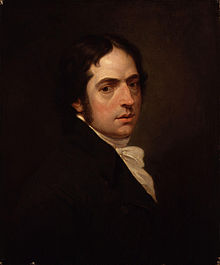
Edward Dayes
Edward Dayes studied under William Pether, and began to exhibit at the Royal Academy in 1786, when he showed a portrait and views of Waltham Cross and Canterbury. In the three following years he exhibited both miniatures and landscapes. He continued to exhibit at the Academy regularly until the year of his death, contributing a total of 64 works. He also was an exhibitor at the Society of Artists.
Dayes drew from nature in various parts of England, including the Lake District and Wales. Much of his topographical work depicted ruins, painted in a palette dominated by blues and greens, which had an influence on the early work of J.M.W. Turner. He laid out detailed rules for the correct method of laying down the colours in landscape in his Instructions for Drawing and Colouring Landscapes, published posthumously.
Many of his drawings were crowded with figures; among these were two views of the interior of St. Paul’s Cathedral on the occasion of the thanksgiving for the king’s recovery in 1789, The Trial of Warren Hastings in Westminster Abbey, and Buckingham House, St. James’s Park (1780), later hung in the South Kensington Museum. All these works were engraved. In 1798 Dayes began to show scriptural subjects, such as The Fall of the Angels (1798), John preaching in the Wilderness (1799), the Triumph of Beauty (1800), and Elisha causing Iron to swim (1801).
He was draughtsman to the Duke of York and Albany. Thomas Girtin, was his pupil.
Dayes engraved at least four mezzotints, one after George Morland, another after John Raphael Smith, and two humorous scenes called Rustic Courtship and Polite Courtship. He wrote an Excursion through Derbyshire and Yorkshire, Essays on Painting, Instructions for Drawing and Colouring Landscapes, and Professional Sketches of Modern Artists. He committed suicide at the end of May 1804. After his death his works were collected and edited by E. W. Bradley, and published for the benefit of his widow in 1805.
His wife painted miniatures and exhibited four works at the Royal Academy between 1797 and 1800.


RAP has The Shattered Mirror, A Regency Romance
The Shattered Mirror
For your enjoyment, one of the Regency Romances I published. It is available for sale and now at a reduced price of $3.99, and I hope that you will take the opportunity to order your copy.
Order for yourself or as a gift. It is now available in a variety of formats. For just a few dollars this Regency Romance can be yours for your eReaders or physically in Trade Paperback.
Barnes and Noble for your Nook
and in Trade Paperback
Bridget Halifax-Stokes was giddy with the excitement of her Season in London. Town had beckoned and her Season came on the heels of the end of the war against the tyrant. All the handsome men were returning heroes. What better year to come out?
Her father thought it all nonsense. Her mother believed that it would be the best showing of any of her daughters. More lords now available and the family’s luck that Bridget was just the perfect age.
All is fun and frivolity for Bridget until she literally crashes into Sir Patrick Hampton as he limps along the High Street. A man she knew once well from her childhood, now a stranger with dark and foreboding eyes. Eyes that had seen more than any man’s share of the war.
Feedback
If you have any commentary, thoughts, ideas about the book (especially if you buy it, read it and like it
July 4, 2016
Regency Personalities Series-George Douglas 16th Earl of Morton
Regency Personalities Series
In my attempts to provide us with the details of the Regency, today I continue with one of the many period notables.
George Douglas 16th Earl of Morton
3 April 1761 – 17 July 1827
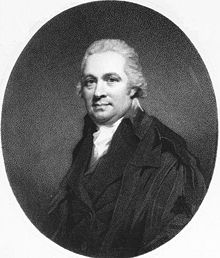
George Douglas
George Douglas 16th Earl of Morton was the only son of Charles Sholto Douglas, and Katherine Hamilton. He succeeded to the title Earl of Morton in 1774 aged only thirteen, following the death of his father. He was sent to Eton College to be educated. Following his education he conducted a Grand Tour of Europe, as was the fashion of the day, and visited most of the European Courts.
He was elected a Fellow of the Royal Society in February 1785. His proposers were Daniel Rutherford, John Robison, and Alexander Keith. He served as vice-president of the Royal Society of London occasionally from 1795-1819, if Joseph Banks was unavailable.
He served as a representative peer from 1784 to 1790 and as Queen’s Chamberlain 1792 to 1818. He was also Lord Lieutenant of Fife from 1808 to 1824. He was also High Commissioner to the Church of Scotland.
In August 1791 he was made Baron Douglas of Loch Leven. Thereafter he took a seat in the House of Lords between Lord Howard de Walden and Lord Walsingham. He was knighted at St. James’s Palace in 1797.
He died at the family estate of Dalmahoy House on 17 July 1827.
On 13 August 1814, he married Susan Elizabeth Buller (daughter of Sir Francis Buller). They had no children.
He was succeeded by his first cousin, George Sholto Douglas.


Trolling Down to Old Mah Wee, another Fantasy
Trolling Down to Old Mah Wee
Not only do I write Regency and Romance, but I also have delved into Fantasy.
The Trolling series, (the first three are in print) is the story of a man, Humphrey. We meet him as he has left youth and become a man with a man’s responsibilities. We follow him in a series of stories that encompass the stages of life.
We see him when he starts his family, when he has older sons and the father son dynamic is tested. We see him when his children begin to marry and have children, and at the end of his life when those he has loved, and those who were his friends proceed him over the threshold into death.
All this while he serves a kingdom troubled by monsters. Troubles that he and his friends will learn to deal with and rectify. It is now available in a variety of formats.
For $2.99 you can get this 2nd book in the fantasy adventure series of Humphrey and Gwendolyn.
Barnes and Noble for your Nook
When the neighboring kingdom of Mah Wee begins to experience the same problems that beset Torahn some years before, they urgently request the aid of the experts in containing a new Troll infestation. But eradicating Trolls is not as easy as exterminating a few rats or mice.
Trolls are bigger than men, they are stronger than men, and then are meaner than men. Humphrey Cutter and his band of mismatched warriors must once again rise to the occasion, but can they without the aid of expertise of Gwendolyn and her particular skills?
Mah Wee, an ancient kingdom, with a monarch more steeped in the rights of being a king rather than the obligations and duties that a king should be. Here Humphrey and his crew finds that they have more than Trolls to overcome if they are to save Mah Wee from the same or nearly similar problems that they faced before in Torahn.
But, as Humphrey knows, nothing can truly be accomplished if the lovely Gwendolyn is not able to lend her aid as well.
Feedback
If you have any commentary, thoughts, ideas about the book (especially if you buy it, read it and like it
July 3, 2016
Regency Personalities Series-Peter Ewart
Regency Personalities Series
In my attempts to provide us with the details of the Regency, today I continue with one of the many period notables.
Peter Ewart
14 May 1767 – 15 September 1842
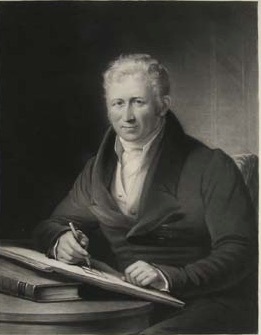
Peter Ewart
Peter Ewart was a British engineer who was influential in developing the technologies of turbines and theories of thermodynamics.
He was son of the Church of Scotland minister of Troqueer near Dumfries, and was one of eleven children. His brother Joseph Ewart became British ambassador to Prussia; John, a doctor, became Chief Inspector of East India Company hospitals in India; and William, father of William Ewart. was business partner of Sir John Gladstone, father of William Ewart Gladstone, whose godfather he was and whom he was named after.
After graduating from the University of Edinburgh, he was apprenticed to millwright John Rennie. His work with water wheels led him to work with Matthew Boulton and James Watt for whom by 1790 he was agent in Manchester. At the same time as acting as agent he was also trading on his own account as a millwright, enabling him to provide the complementary shafts, gears and other necessities to harness the power of the Boulton & Watt steam engines.
In 1792, frustrated in administering the immature and, as yet, unreliable machinery, he left Boulton and Watt to work in partnership with Samuel Oldknow in a cotton bleaching and calico printing venture. He anticipated this being a profitable concern but the partnership was dissolved within a year and he returned to engineering. In 1798 he went into partnership with Samuel Greg, installing an innovative water wheel at Greg’s Quarry Bank Mill on the River Bollin in Cheshire. As a standby, he installed a Watt steam engine.
By 1811, Ewart had abandoned the venture with Greg to concentrate on his own manufacturing business but also his scientific work. He became, along with John Dalton, a vice-president of the Manchester Literary and Philosophical Society and became active in the contemporary controversies about heat, work and energy. Motivated by a paper of John Playfair and encouraged by Dalton, in 1813 he published On the measure of moving force in which he defended the nascent ideas of the conservation of energy championed by John Smeaton. The paper was strongly to influence Dalton’s pupil James Prescott Joule. A vocal advocate of the application of scientific knowledge in engineering, he was one of the founders of the Manchester Mechanics’ Institute.
Ewart took up the post of Chief Engineer and Chief Inspector of Machinery with the Admiralty in 1835 and died on 15 September 1842 at Woolwich Dockyard when a chain snapped as he was supervising the removal of a boiler.


RAP (Regency Assembly Press) in need of Beta-Readers
Regency Assembly
Press
is looking for
Beta Readers
One novel is ready for Beta Reading
We have a continuation of Pride and Prejudice with Ms Caroline Bingley and her fortune at stake:
Do we think that Mr Hurst married his Bingley Bride without incentive? It is highly probable that Caroline Bingley, even though she has a sharp, acerbic tongue, still is in possession of a fortune and an astute fortune hunter who deciphers this may soon be on the road to, if not a happy marriage, one with financial security.
Please respond or send an email if you are interested




